Blogs
Dive Indonesia Part 1: Ambon Trip Report
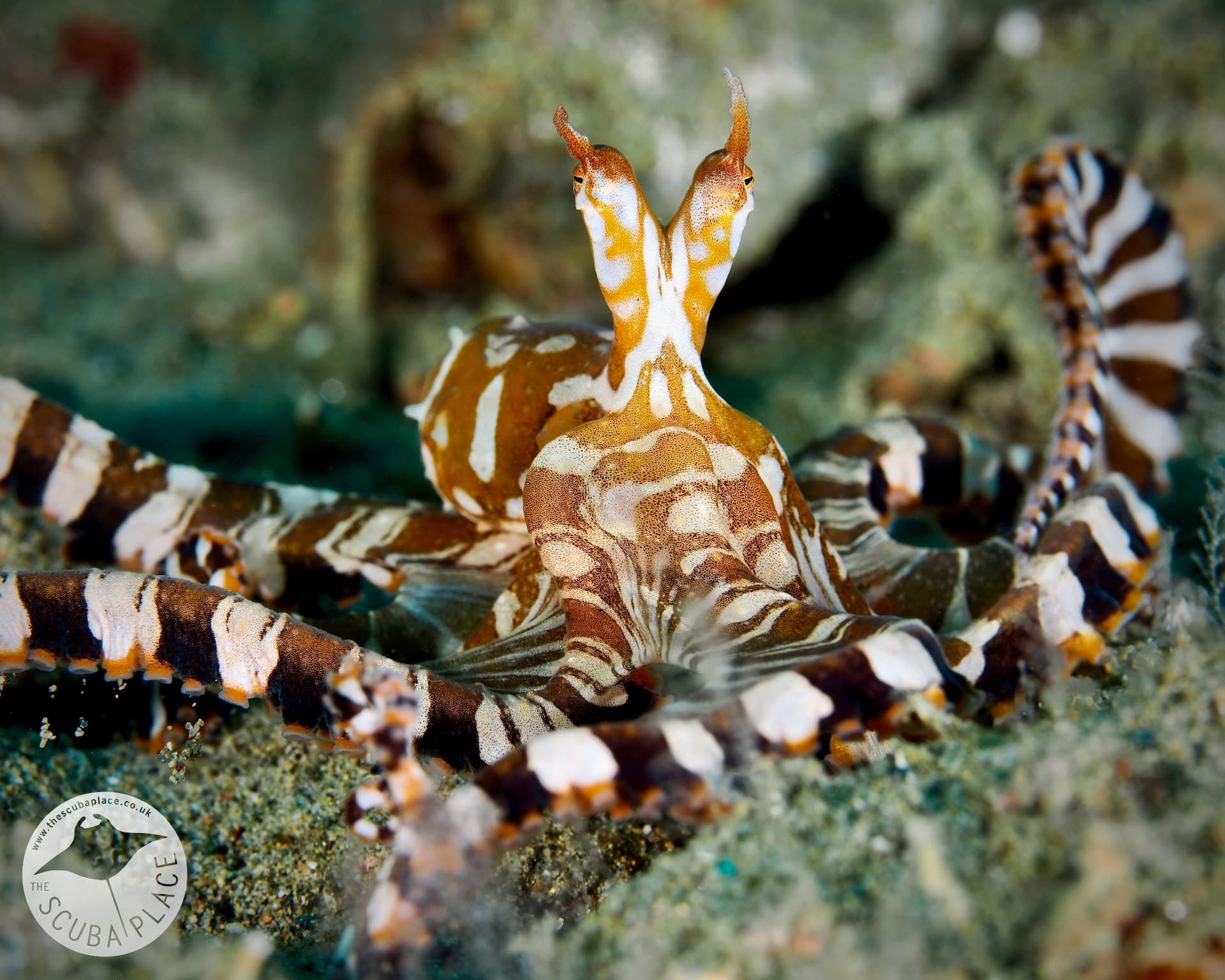
This January The Scuba Place visited Ambon, Raja Ampat and Lembeh hosting a group of divers. They stayed at some amazing resorts and saw some amazing things. This is their trip report for the first stop in Ambon at Spice Island Divers.
It seems that I start so many trip reports with “We had a trip scheduled here, but then COVID came…” but sadly, this is true. Two plus years later, and the world has almost returned to a full normal. We had planned a trip to Ambon having heard so much about it in the past, and with two other destinations to check out we bolted on a stay at Spice Island Dive Resort.
Our journey took us from London Heathrow to Dubai, and after a three-hour leg stretch, on to Jakarta. Immigration in Indonesia is Visa on Arrival for 500,000IDR or $35USD. We paid in USD and only our unmarked and undamaged bills were accepted. And we found the same to be true at the currency exchange desks in the arrivals area of the airport when we exchanged our Sterling for Rupiah. The Custom Declaration can be completed ahead of arrival and the QR code is all you need to show.
We arrived in the late afternoon, so we chose to stay the night in a local airport hotel, the FM7. The hotel is about 10 minutes away from the airport, and transfers to and from the hotel are free of charge if pre-booked. After a full day (and night) of travelling, any hotel bed will normally do, but the FM7 has lovely clean rooms, super-comfortable beds, and showers with plenty of power – everything the tired traveller needs! The rooftop bar is the place for cocktails and snacks, and the restaurant on the ground floor has a huge menu, with Thai, Indonesian and Western offerings. Everything we ordered was super tasty, fresh, and incredibly well-priced. A two-course meal with a beer cost about £10 per person.
After a great night of sleep and a huge breakfast (buffet included in the room rate), we took the shuttle back to the terminal to catch our onward flight to Ambon with Garuda Airlines. The 3-hour direct flight is as comfortable as any EasyJet flight and divers get an additional 23kgs of allowance for dive equipment, over and above the standard 20kgs allowance.
Descending over the mountains and rainforest was spectacular – and within just a few minutes of landing, our baggage was arriving on the conveyor belt, and we were straight out into our transport to the resort. And just 10 minutes later, we arrived at our home for the week!
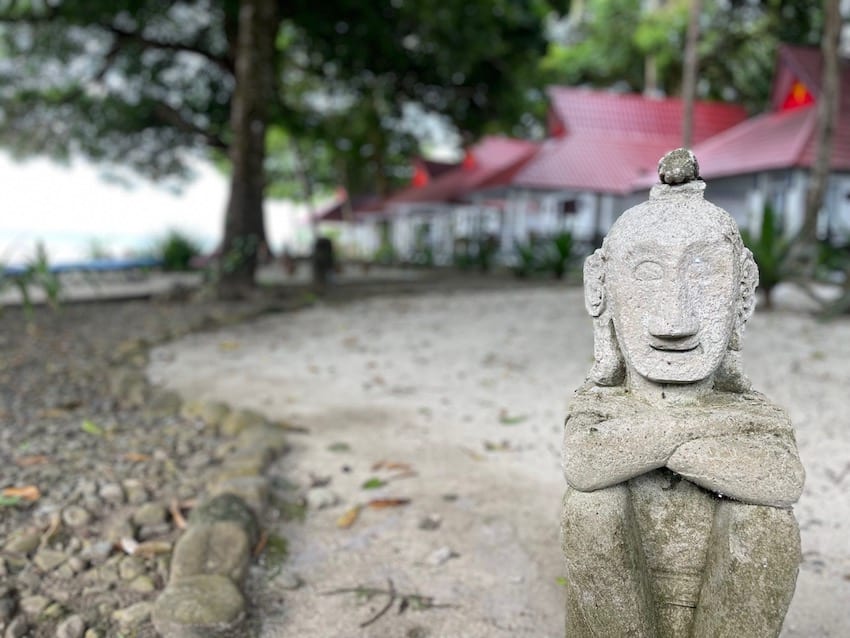
Spice Island Dive Resort is one of just two dive resorts currently operating on the island of Ambon –tourism was non-existent until recently, and many operations on Ambon suffered dramatically during and after COVID.
As one of the survivors, it is safe to say that this is an established operation, but it is still small! A handful of just nine seafront villas and a traditional longhouse with four garden view rooms make up the accommodation. All rooms are air conditioned, have desks and wardrobes, and en-suite shower rooms. They are very spacious, and accommodate two divers with kit, clothes, cameras and laptop. The rooms all have two desks and two wardrobes, a UPS/current stabiliser, and extension leads provided plus drinking water and a kettle with tea and coffee. The beds couldn’t have been more comfortable, and the air-conditioning works very well – a much needed provision for the first day or two until we became acclimatised to the heat and humidity!
Meals are served in the open-air restaurant on the water’s edge, and the food was exceptional – a solid breakfast of eggs, nasi goreng, pancakes, or oats and plenty of fruit and juice too. Lunch is three courses, beginning with a starter, followed by a main, and then fruit for pud. Dinner tended to be a bit of a bigger meal, with a delicious soup or more solid starter, followed by a main, and then a proper pud! The style is very much Indonesian – rice, noodles, spice and flavour, and the kitchen toned it both up and down for us when it came to the spicing. Each meal was freshly cooked, and the chef was very happy to accommodate requests and preferences as well as any dietary requirements. At the end of the day, it was the done thing to sit in the open-air lounge with the bar and watch the world go by with an ice cold Bintang. When in Rome…!
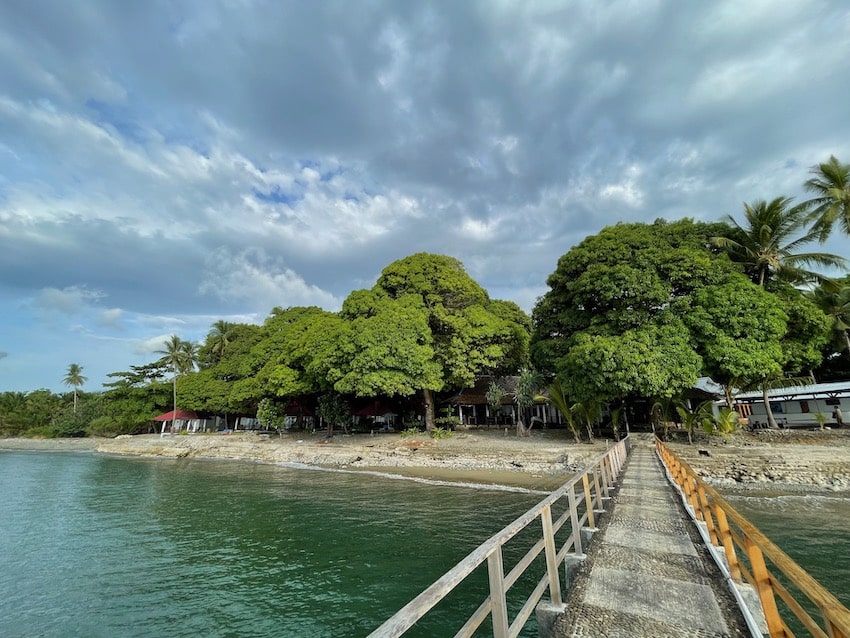
The dive centre is right on site and is equipped with large rinse tanks and outdoor showers, toilets, and benches for getting ready on. There are shelves with baskets for dry stuff that you don’t take on the boat with you. NITROX was included in our package, and 15l cylinders were available to rent. A new indoor classroom and retail shop was under construction, and we expect it will be a nice addition.
The air-conditioned camera room is next to the bar area on your way to the dive centre and has cubbies with power sockets, towels and storage for camera bags. At the dive centre there are camera rinse tanks and air guns.
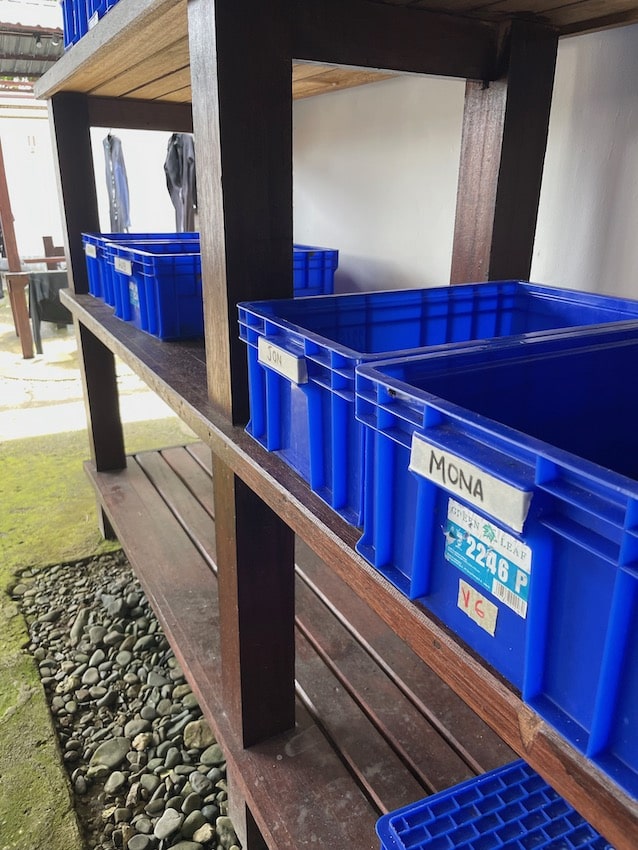
The dive boats, each of them taking only 4 guests at a time, are a short stroll down the jetty. Wet-suited and booted up, you make your way to the boat where all your kit and cameras have already been placed – this really is valet diving! We even had to ask to analyse our own Nitrox – the staff really do look after everything for you!
And the diving?? WOW! and WOW! again! We did two dives each morning with a surface interval on the boat where we were fed cakes and teas, and then a dive after lunch too. The dives are a blend of sand, muck and reefs made up of small coral bommies. We didn’t hit a depth more than 25metres but could have if we had felt so inclined! There was so much to see that we didn’t need to go deep or move very far most of the time!
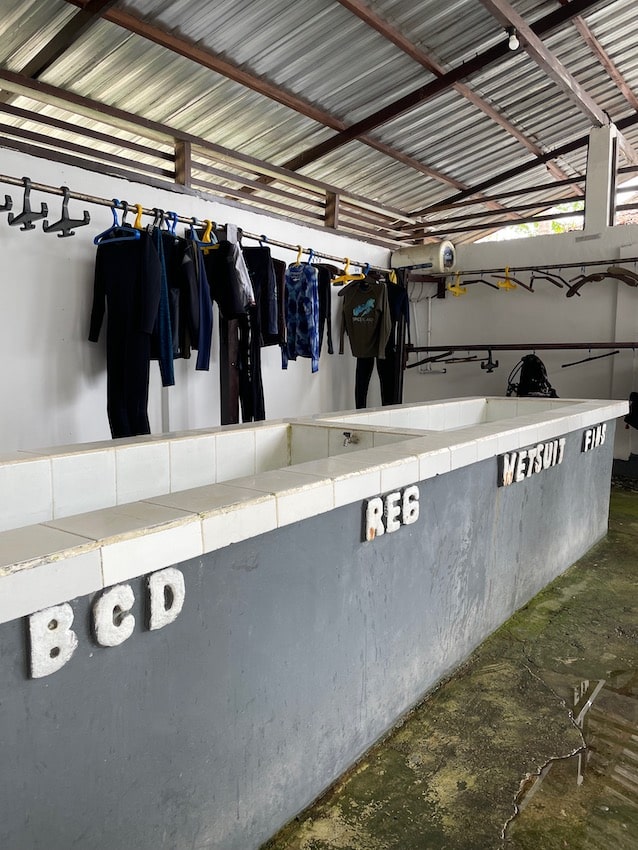
The list of critters we encountered is endless, and we had a checklist of everything that we wanted to see, including Harlequin shrimp, wonderpus, mimic octopus and pygmy seahorses. We saw EVERYTHING, including two Wonderpus mating! Our photos can do the talking, but look carefully at them, especially the octopi – zoom in and you will see a female wonderpus under the stretched skin of the male in the immediate foreground!
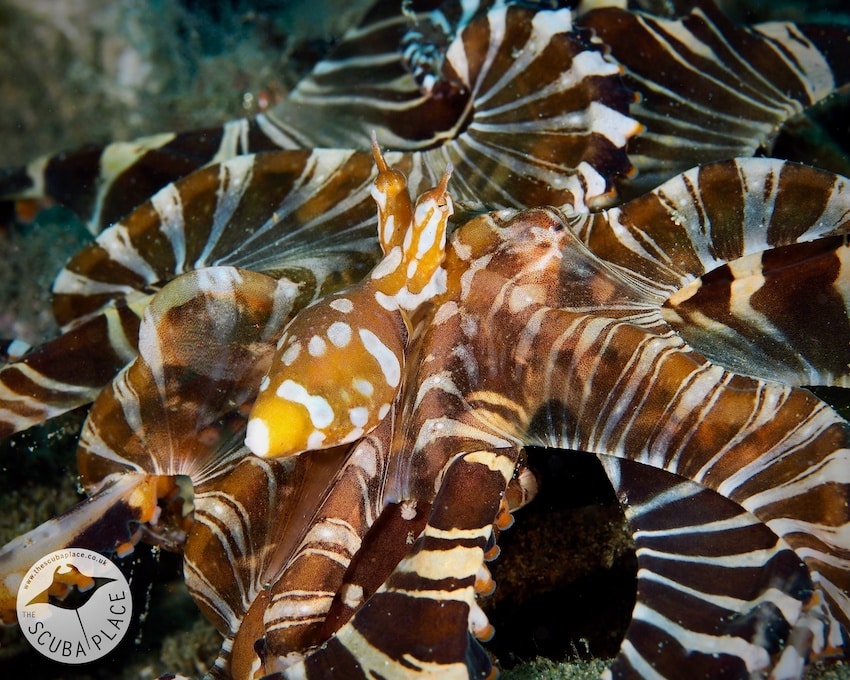
The afternoon dives brought on some current, so we opted for more of the reef-type offerings rather than fight currents whilst diving the muck, and we even hit one or two of the piers along the coast too – these provide some shelter, great backdrops, and home to more amazing marine life. Here we found warty and painted frogfish, nudis galore, more octopus, snake eels, morays, ribbon eels and much more.
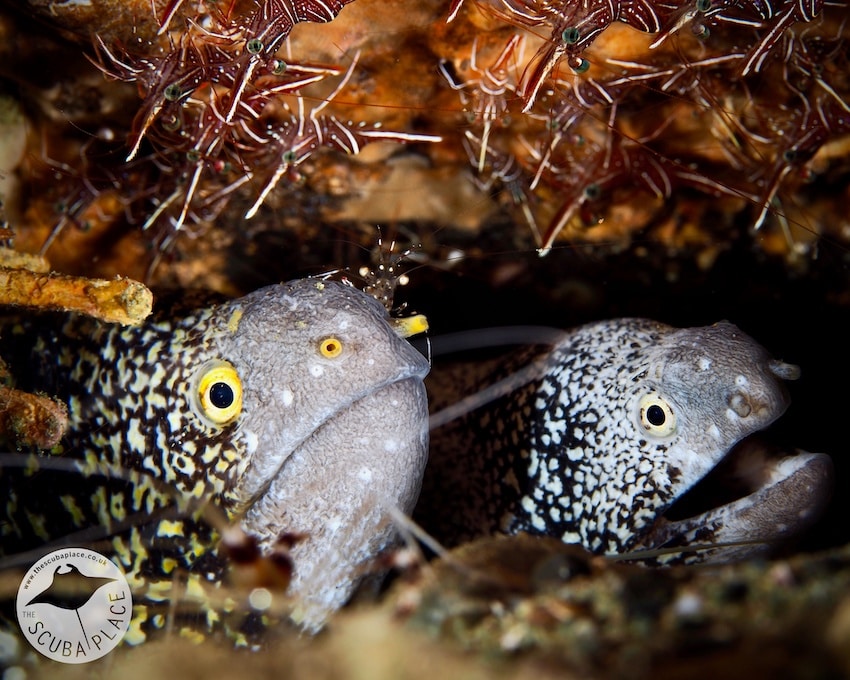
The visibility throughout our stay, even with a bit of rain, was normally 15-20m and the water temperature was a balmy 29’. Our group wore 1 to 3mm full suits and had no issues in maintaining core temperatures on 70-90 minute dives!
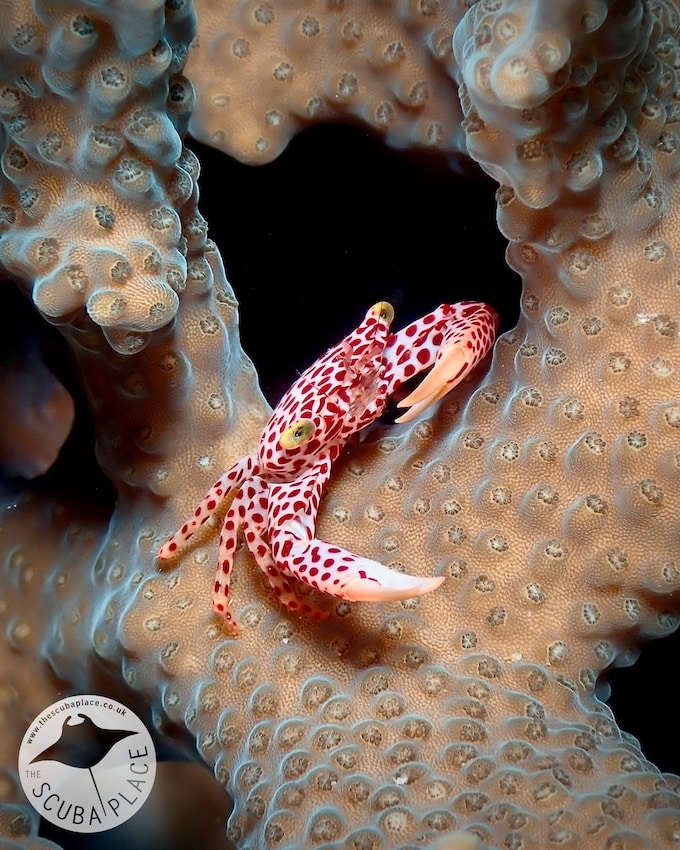
If you want a quiet and relaxed destination that delivers amazing diving with amazing guides, good accommodation, and great food, and you’re a critter-fan, then Ambon is for you!
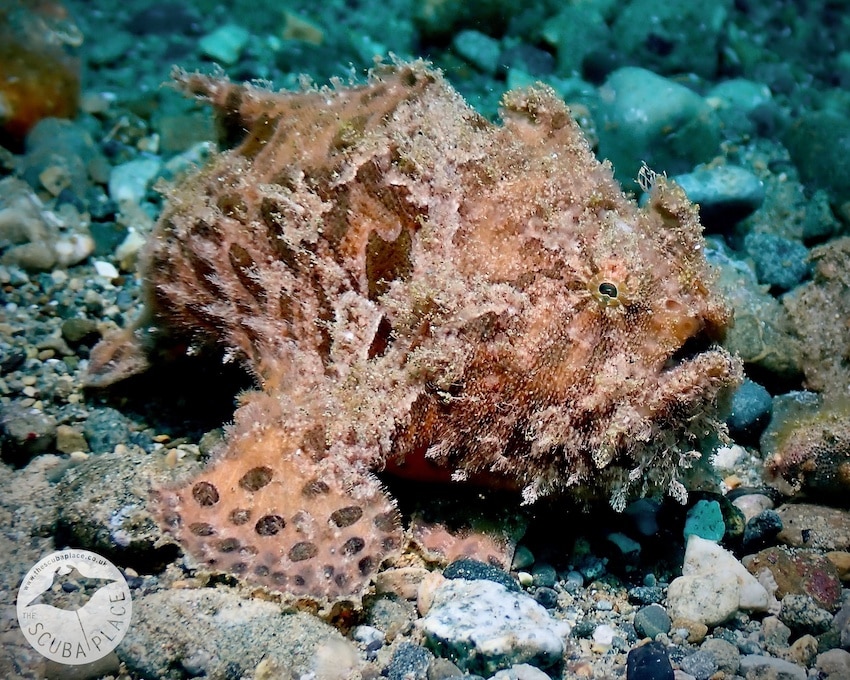
We loved it and will go back without any encouragement. We would stay happily for a week to ten days before moving on – there is so much diversity in Indonesia that it would be a shame not to make the most of the opportunity to fly on to another island. Which is exactly what we did…. Watch this space for our trip reports on Raja Ampat and Lembeh!!!
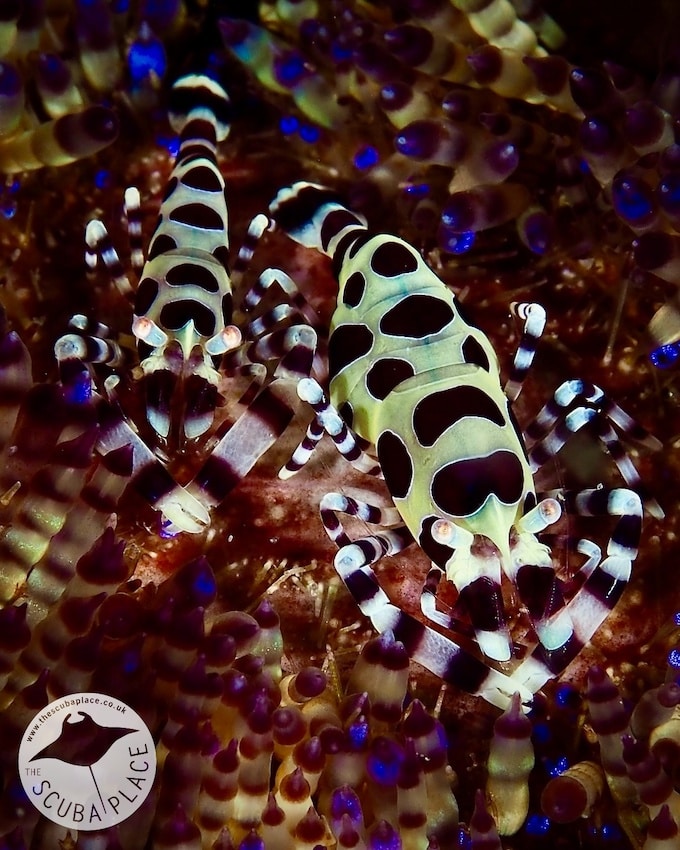
Key Facts:
- Getting there :Our flights were with Emirates flying from Heathrow to Jakarta via Dubai. We spent the night in Jakarta at the FM& Hotel just down the road from the hotel for a sleep and breakfast before heading back to the airport for our 3 hour flight from Jakarta to Ambon. We were picked up at the airport for a short 15 minute drive to the resort.
- Air temperature : Tropical – average daily temperature throughout the year is 24-30°C. The warmest and driest months are April and May and the wettest months are usually July and August
- Water temperature :An average of 29°C. A 1-3mm full suit or shorty will suit most.
- Visa requirement : We purchased our Visa on Arrival at the Jakarta airport for $35USD (or 500,000IDR) The visa for an initial period of 30 days. Make sure you have pristine bank notes if paying in USD or exchanged GBP when you get to Indonesia. The bills must be unmarked and undamaged to be accepted. The Customs Declaration must be completed online and the provided QR code is shown to the Customs officers.
- Currency : Indonesian Rupiah(IDR) or US Dollar are accepted most places. We exchanged Sterling for Rupiah at the Jakarta airport for an attractive rate and paid our bill in Ambon with Rupiah.
- Electricity :230V with European style (round pin) two-prong plugs. Our room and the camera room had extension leads with UK plugs so no adapter was needed.
- Internet and Wi-Fi : There is wifi in resort and worked well in our room which was furthest from reception. We were able to email, WhatsApp and post on social media without issue.
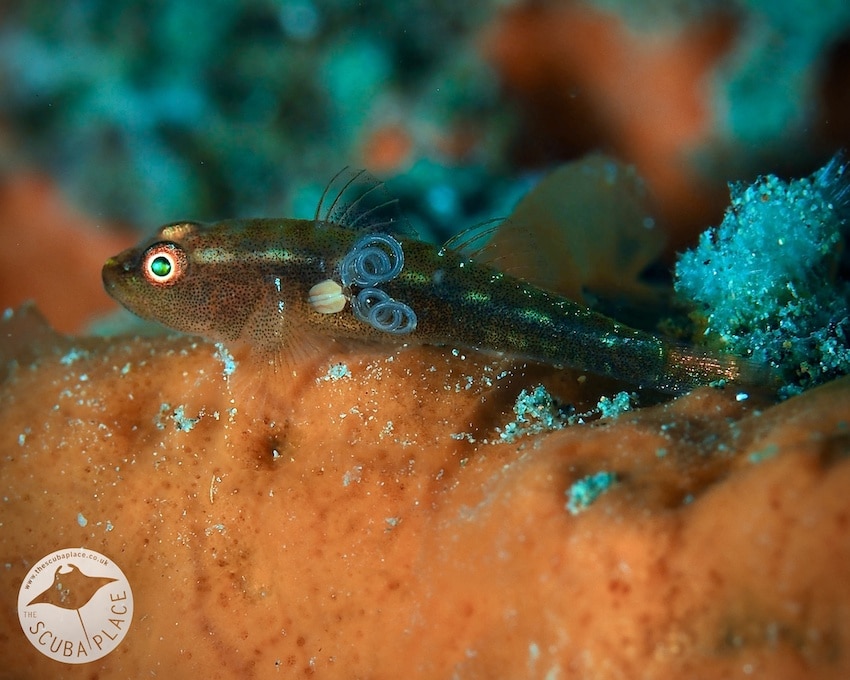
Price Guide: Expect from £2650 per person based on two sharing a garden longhouse room for 7 nights with 6 days diving – 3 dives per day offered. Free NITROX and full board with amazing food. International flight. Extras : Indonesian Visa on Arrival, soft drinks and adult beverages, and tips.
Our Advice: Indonesia is an amazing destination. We made our stay in Ambon the first stop of our three-centre trip to take advantage of the travel distance. Go Explore!
We’re heading back to Indonesia in January 2025 and Ambon is our first stop again before Triton Bay and Lembeh. Check out our brochure with full itinerary here.
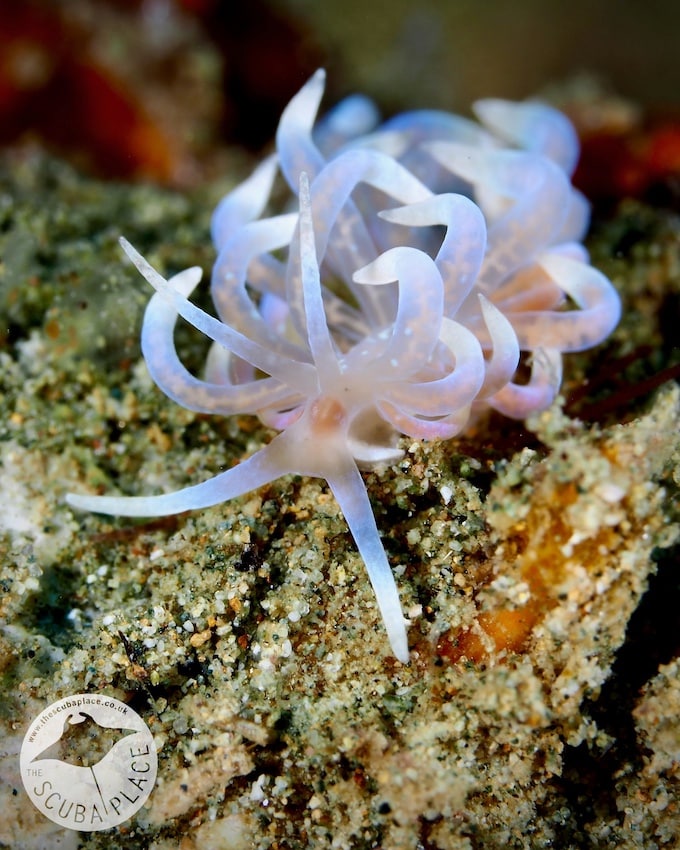
Packing tips :
Rechargeable fan(s) : If you’ve read any of our recent trip reports we recommend these over and over again. Perfect for warm planes, stuffy transfers and still evenings. We can’t believe we travelled without them for so many years! Join the fan club and grab one off Amazon… you won’t regret it!
Insect repellent : We’ve made a habit of throwing some repellent in our dive bags every trip but with the lovely breezes we didn’t suffer the mozzies much at all!
Sunscreen : Don’t forget to protect yourself when you’re in the sun and on the water!!
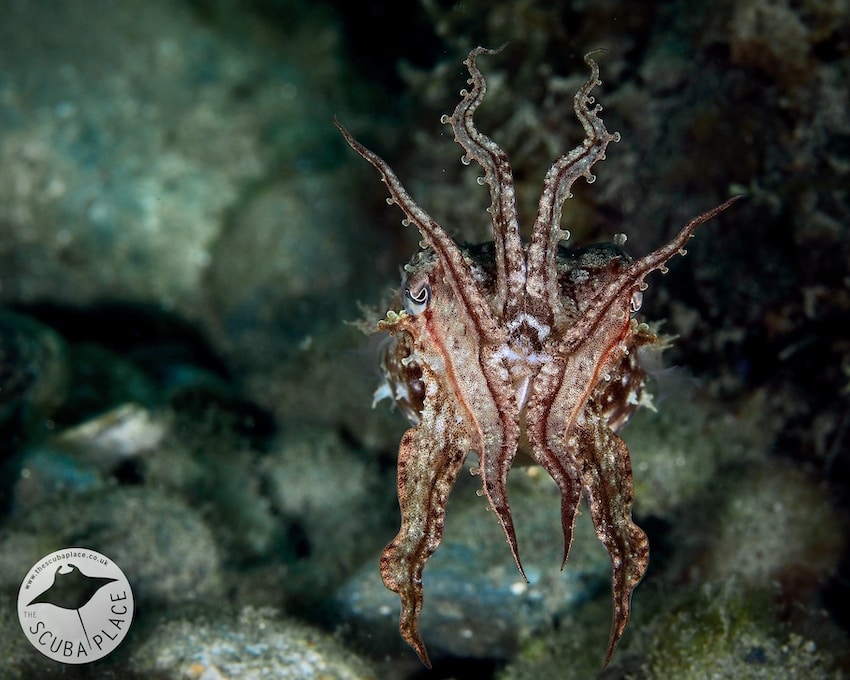
Come Dive with Us!
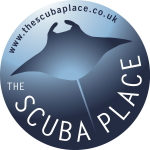 The Scuba Place designs and builds custom scuba diving holidays. With personal knowledge and experience diving in many of our destinations, there is no one better to help build your dream dive holiday. Come Dive with Us!
The Scuba Place designs and builds custom scuba diving holidays. With personal knowledge and experience diving in many of our destinations, there is no one better to help build your dream dive holiday. Come Dive with Us!
Call us at 020 3515 9955 or email at reservations@thescubaplace.co.uk
Find us at https://www.thescubaplace.co.uk
Facebook : https://www.facebook.com/thescubaplace
Instagram : https://www.instagram.com/the.scuba.place/
YouTube : https://www.youtube.com/channel/UCH684OdioYirI-zzdT58Ceg
Blogs
Alonissos: The complete diving destination (Part 1)

In June we were incredibly fortunate to be invited to dive in Alonissos, a small Greek Island in the Sporades island chain located in the North Aegean Sea. While I have long been a big fan of the Greek Islands as a great holiday destination, I had not had the opportunity to do any diving on previous visits and Mike and I were extremely excited to see what Alonissos had to offer both above and below the surface!

The Sporades are easily accessible via the airport in Skiathos (the first island in the chain), which is served by Jet2 flights from all major UK airports from May through October. Numerous ferries and charter boats make island hopping from Skiathos Town a breeze. After an hour boat ride, the picturesque port of Patitiri was a wonderful introduction to Alonissos, where we were met by our gracious hosts Kostas of Albedo Travel and Dias of Alonissos Triton Dive Center. Mike and I were delighted to be staying at the Paradise Hotel, aptly named for its stunning views over the sea and great location for walking to the waterfront.

Alonissos is beautifully situated in the National Marine Park of Alonissos and the Northern Sporades, the largest marine protected area in Europe. The surrounding seas offer fabulous marine life, including incredibly rare species such as the Mediterranean monk seal. They boast deep walls covered in gorgonians and sponges, stunning topography with caverns, swimthroughs and pinnacles, and the first accessible ancient shipwreck from 500BC!

In locations where historical sites have been reported, the waters are largely restricted, but with collaboration between government, underwater archeologists and dive centres, incredible underwater museums are being created for a truly unique diving experience. Alonissos is home to the first of these, the Ancient Shipwreck of Peristera Accessible Underwater Archeological Site. The chance to dive into history (along with reports of healthy reef life and amazing underwater topography) meant Mike and I were keen to get in the water.

Our introduction to the diving around Alonissos was at the Agios Georgios Pinnacles, in the channel between Alonissos and Skopelos. This fantastic site was named “The Chimney,’ and proved to have a huge amount to see. We got to a decent depth here (over 25m), and marvelled at a colourful reef wall with a wonderful swim through whose rocky walls were absolutely covered with life. As well as brilliant topography there was no shortage of macro life here. We saw numerous nudibranchs, five different species in total. The second dive at Mourtias reef nearby was a shallower dive along a nice wall with lots of crevices. Several moray eels and grouper called this site home. We enjoyed looking in the crevices for lobster and smaller benthic life, such as cup corals and tunicates.

Our itinerary allowed us two dives a day with afternoons left to explore the island with our hire car and evenings to enjoy the famous Greek hospitality. This proved to be a lovely mix of in-water and land based diversions.

The next days diving to the Gorgonian Gardens and Triton’s Cave was to be even better! These two stunning sites are nothing short of fabulous. The Gorgonian Gardens was a deep wall near to the Agios Georgios islands. The ever-present currents in this deep channel meant that the sea life was amazing … the namesake Gorgonian sea fans dotted the wall at a depth of 30 to 50 meters, getting ever larger the deeper we went. Above 30m was by no means less beautiful, with sponges, corals, scorpionfish, moray eels and some rare and colourful nudibranchs.

The second shallower dive of the day was to Triton’s Cave or the Cavern of Skopelos, on the east side of that island. The spectacular rock formations had wild striations both above and below the water making a truly epic topography. The cavern entrance was at 14m, and big enough for a buddy pair, winding up to 6m and passing two beautiful windows out into the blue. Emerging from the cavern, the light at the shallower depths and the incredible rock formations made for a fantastic gentle swimming safety stop and we all surfaced by the boat with massive grins.

Check out our next blog :Alonissos: The complete diving destination (Part 2)” to hear about our amazing dive on the 2500 year old Peristera Wreck!
Thanks to:
Alonissos Triton Dive Center https://bestdivingingreece.com/
Albedo Travel https://alonissosholidays.com/activities/
Paradise Hotel https://paradise-hotel.gr/
Alonissos Municipality https://alonissos.gr/en/
Blogs
Mamma Mia! Diving Skopelos (Part 2)

Our second days dive itinerary was to the famous Christoforos wreck! This is arguably the best dive in Skopelos and though only open to divers with deep diving experience, this 83m long wreck is well worth the visit.
The Christoforos sits in 43 meters of water with the deck at 32 to 35 meters. A 30m dive can give an impressive view of the wreck, though such a large wreck needs a few dives to truly do it justice. Given its ideal location just a 2 minute boat ride from the dive centre dock it is an excellent first dive of the day. The sheltered site is also diveable in all but the absolute worst weather so although deep, the water is usually clear with little to no current making it a very pleasant dive. The site is superb for technical diving and a great training site for the Tec 40 and 45 programs, offered by Skopelos Dive Center.

The Christoforos wreck was originally a collier ship built in 1950 at Grangemouth shipyard under the name “Thomas Hardie”. In 1976 she joined the Greek merchant fleet as “Christoforos”. On the 2nd of October 1983 the Christoforos was carrying 2600 tonnes of cement from Volos to Piraeus Port. During the voyage the weather turned, resulting in the ship developing a 7 degree list, whereby she changed course for safe anchorage at Panormos, Skopelos. The ship reached Panormos at 16:00 with a list of 17 degrees and water ingress to No. 1 hull. Though attempts were made to right the vessel, the crew were ordered to abandon ship at 22:00. The captain, lieutenant and the quartermaster remained to try and save the ship, but had to abandon the attempt themselves and the Christoforos finally sank at 05:30 on 3rd October 1983. She now sits upright in 43 meters of water less than 200m from shore in Panormos.

Diving has only been allowed here since 2018, so the wreck is very well preserved and a real treat to dive. Permission to dive here was granted by the authorities after lots of incredibly hard work by the Skopelos Dive Center staff. Having a fantastic wreck in such an amazing location and in excellent condition is a real privilege.

Of all the sites in Skopelos this was the site Mike and I were most keen to experience. Having kitted up and zipped across the bay to the mooring, we left the surface and followed the descent line until the wreck emerged spectacularly from the blue at 15m. She is a big and beautiful wreck, sitting as though calmly continuing her journey along the seabed. With most of her original features still intact there were points of interest everywhere, including the anchors, winches, ships telegraphs, the wheel and RDF antenna.

We found that aquatic life had colonised the ship, with schools of fish, electric blue nudibranchs, a large moray eel and the resident scorpionfish lurking inside the bridge. The Christoforos was truly a stunning wreck and despite maximising our time at depth we eventually had to say our goodbyes and begin the slow and steady return to the surface.

After a superb morning dive we had the afternoon to do a little sightseeing of the island, with a trip to the church of Agios Ioannis Kastri made famous by the blockbuster movie “Mamma Mia!”. Mike and I spent a happy afternoon pootling around in our little hire car before meeting up with Lina from Skopelos Dive Center. An underwater archeologist as well as a dive professional, Lina had offered to show us a rather special attraction, the Christoforos shipwreck Digital Spot public information and awareness centre.

A fantastic initiative made possible from the collaboration of the government and hard work of the staff at Skopelos Dive Center is the “Digital Spot” in Agnontas port. This information center has a number of displays on the history of the Christoforos wreck, the process by which the wreck was allowed to be opened to the public for diving tourism, other sites of historical interest in the area, a video of the wreck and the best bit, a virtual reality dry dive experience! The beauty of the VR system is that non diving members of the family can see what you have seen on the wreck, or you can see areas that you may not have explored during the dive due to time or depth limitations. It was a truly immersive experience and a great addition to the dive itself.

After a wonderful day we celebrated our last evening on the island with an exquisite meal in Skopelos Town with fabulous views over the town and bay, washed down with the excellent local wine. The lamb with lemon and potatoes was a meal which I could happily eat every day for the rest of my life!

Skopelos is an island that truly has it all. The diving is excellent, the landscape is beautiful with plenty of non diving activities, the locals friendly and the food and drink superb. Given how accessible it is as a holiday destination it has avoided becoming overcrowded and even in peak season offers a fun yet relaxing atmosphere. We highly recommend giving Skopelos a visit. We will certainly be back again!
Thanks to:
Municipality of Skopelos (https://skopelos.com/)
Skopelos Dive Center (https://sporadesdiving.gr/)
Ionia Hotel (https://www.ioniahotel.gr/en)
Dolphin of Skopelos (https://dolphinofskopelos.com/)
Ta Kymata restaurant (@takymata)
The Muses restaurant (https://www.facebook.com/TheMussesMousses/)
Aktaiov resturant (https://skopelos.com/listings/aktaion-taverna/)
-

 Blogs2 months ago
Blogs2 months agoDiving With… Nico, Ocean Earth Travels, Indonesia
-

 News1 month ago
News1 month agoMurex Bangka Announce New Oceanfront Cottages & Beachfront Dining
-

 Blogs2 months ago
Blogs2 months agoA new idea in freediving from RAID
-

 Marine Life & Conservation1 month ago
Marine Life & Conservation1 month agoIceland issue millionaire whale hunter a licence to murder 128 vulnerable fin whales
-

 Marine Life & Conservation2 months ago
Marine Life & Conservation2 months agoThe Shark Trust Great Shark Snapshot is back
-
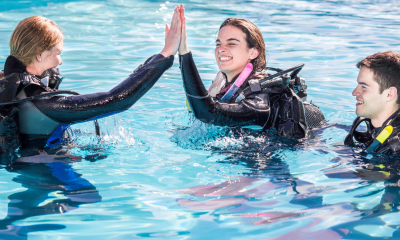
 News3 months ago
News3 months agoCharting New Waters; NovoScuba Goes Global with the Launch of their Revolutionary Dive Training Agency!
-

 Gear News1 month ago
Gear News1 month agoNew Suunto Ocean – a dive computer and GPS sports watch in one for adventures below and above the surface
-

 Marine Life & Conservation Blogs2 months ago
Marine Life & Conservation Blogs2 months agoBook Review: Plankton















